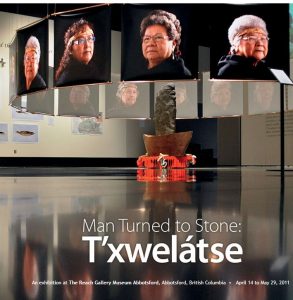My final entries for Module 4 are sometimes eclectic, reflecting the wandering nature of this journey I have taken, and sometimes repetitive when considering that several of my classmates have likely posted the same links. However, I feel enriched for having the chance to explore the multitude of online resources, and through the contributions of the class, I feel an emerging confidence in being able to find and utilize authentic resources for my classes.
#16
http://mediasmarts.ca/blog/new-tools-aboriginal-youth-making-good-decisions-about-sharing-online
This is an excellent resource for media literacy for youth in Canada. The specific link refers to resources that have been translated into Cree, Ojibwe, and Inuktitut, dealing with sharing and smart decision making when negotiation content online. The site offers resources on larger media related topics, from Aboriginal peoples in general, to stereotyping and representation in media.
#17
https://next150.indianhorse.ca/challenges/authentic-indigenous-arts
#18
https://www.reclaimindigenousarts.com/home
Since my final paper deals with cultural appropriation, my search for related resources brought me back to the “Next 150” campaign to spread awareness of Truth and Reconciliation through Canada by way of a variety of social media challenges. This particular challenge is presented by Nadine, St.-Louis, a prominent “social and cultural entrepreneur”. In a short video, St.-Louis shortly summarizes cultural appropriation before directing the audience to pledge that can be taken to promise to support only Indigenous artists and their work. St.-Louis also directs the viewer to – among other resources – www.reclaimindigenousarts.com, an “awareness campaign and a Call to Action” surrounding cultural appropriation in Canada. The site explains cultural appropriation and offers ways the viewer can help support the campaign. St.-Louis and Toronto based artist Jay Soule (who’s featured in the Module 3 collection of sources) are credited with originating the campaign.
#19
http://www.isuma.tv/isuma
The production group mentioned in the Faye Ginsburg chapter caught my attention, so I decided to include it. The site contains information on the founders of the group and their various projects.
#20
http://aptn.ca
Failing to make the cut from my Module 1 contribution, The Aboriginal Peoples Television Network site was a contribution I wanted to explore and include at some point. Combining news and various television programming, the site offers for me eye-opening evidence of the values and interests of a culture that I knew so little about. I will certainly be coming back to this site in the future to explore more the types of stories that are told through this historic indigenous media hub.
#21
https://www.sonnyassu.com/
#22
https://canadianart.ca/features/sonny-assu-complex-mix-of-cultures/
In looking for more artists for my final project, I came upon a local (North Delta) artist who, like Lawrence Paul Yuxweluptun, explores the convergence of the traditional and modern. Like Andy Everson and Jay Soule, Assu sometimes incorporates iconic imagery and themes from western popular culture in order to explore his multicultural influences. The article from Canadian Art covers a wide range of topics, from Assu’s ancestry to his influences and significant modern works.
#23
http://www.unesco.org/education/tlsf/mods/theme_c/mod11.html
UNESCO has created a “multimedia teacher education programme” that attempts to define Indigenous knowledge in hopes of fostering understanding and appreciation for a place for Indigenous knowledge in education around the world. This particular programme offers seven lessons or activities that range in topics that cover the importance of Indigenous education to how to live with Indigenous education and incorporate it into various curricula. This site links to other activities that focus on areas such as experiential learning and storytelling.
#24
https://www-m.cnn.com/2018/11/21/us/missionary-john-chau/index.html
My last entry is from a recent incident involving an American missionary killed on North Sentinel Island after attempting to communicate with the Indigenous tribe there. After reading this particular article, which seems to focus on the missionary’s reasons for illegally traveling to the island and attempting to contact the tribe, I found myself questioning the bias inherent in it, as it seems that detailing the background of the missionary and the devotion to his cause underscored the severity of the crime he committed in trying to contact the tribe. The Christian euro-centrism in this piece resonates strongly, as while the potential harm that such contact presents is raised, and a defense from a group advocating for “tribal peoples’ rights” is presented, the article cannot help but be padded with details of the missionary’s past and devotion to his religion, despite knowing the risks that contact could present. I wonder if CNN would pay as close attention to the motivations of, say, a Muslim who died for their religious beliefs, or a suicide victim who was driven by personal reasons. As a conclusion to this course, I think this article has shown me how my views and understandings have changed with regards to Indigenous peoples and own relationship with their world.
#25
https://www.youtube.com/watch?v=b8C4Qa3f7j8
“Sunshine” from the 80s Australian Reggae group Us Mob. The song has stuck in my head for a few days now, and serves to remind me of the learning I will continue to do with regards to defining and celebrating Indigenous identity and culture through media and technology. Enjoy the song, and if you want to learn more about the group, see the links below (rather than explain, I will let you explore 😉
#26
https://en.wikipedia.org/wiki/Wrong_Side_of_the_Road
#27
http://shop.nfsa.gov.au/wrong-side-of-the-road
#28
https://aso.gov.au/titles/features/wrong-side-of-the-road/clip1/

